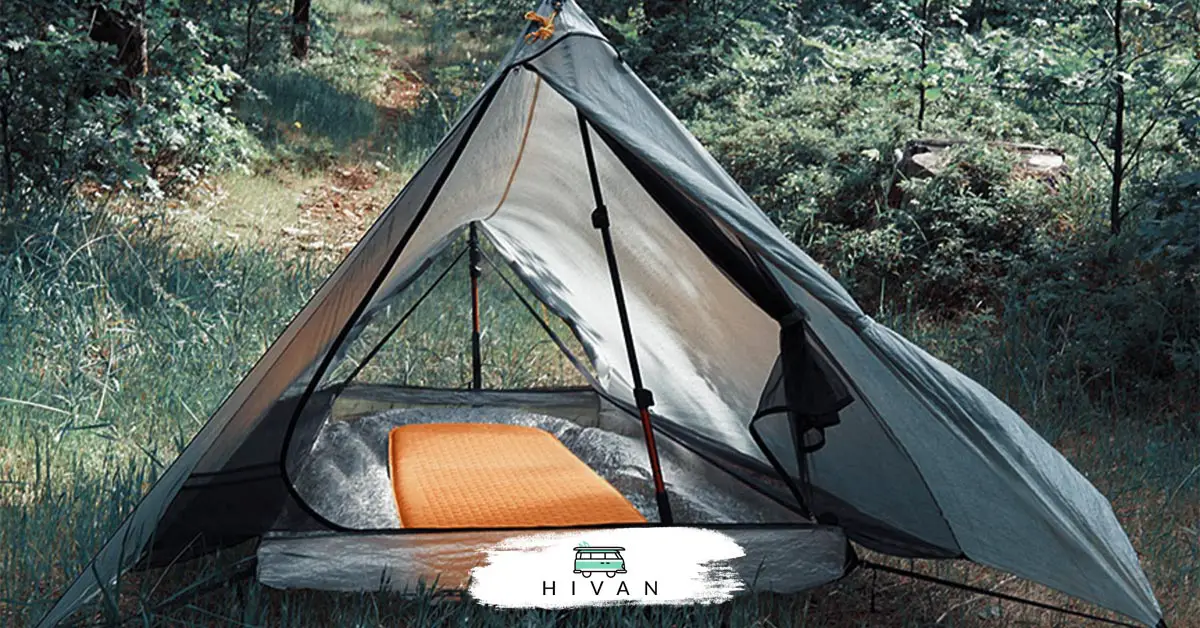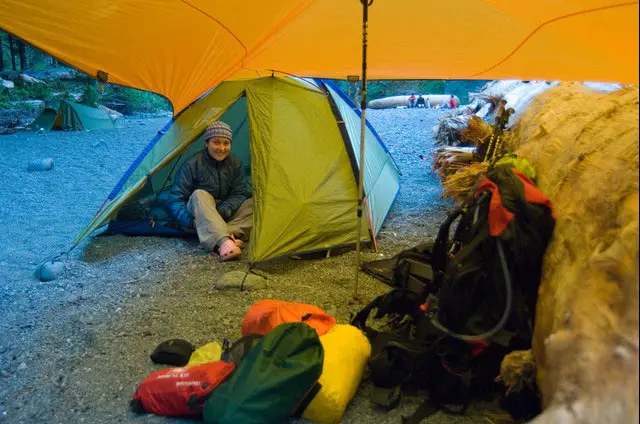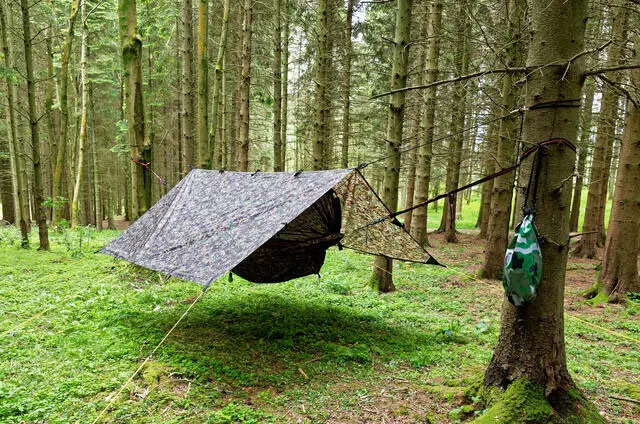Hi-van is supported by its audience. When you purchase using our links, we may earn an affiliate commission (no added cost to you). Learn more
When you’re prepping for a trip, you need to ensure you have everything you need without bringing too much. If you’re packing a tent, you might need a tarp, but then again, you might not. Do all tents come with tarps, or do you need to bring extra tarps just in case?

Not all tents come with tarps.
Some tents are designed to be used without a tarp or fly sheet, especially those that are made for use in dry or desert climates.
However, most tents do come with a tarp or fly sheet as it provides an extra layer of protection against rain, wind, and other weather elements.
It is always a good idea to check the specifications of a tent before purchasing it to see if it comes with a tarp or fly sheet, and if not, to purchase one separately to ensure that you have adequate protection for your camping trip.
Read on, and we’ll break down why tarps are so crucial for camping.
Fly Sheets vs. Tarps

Fly sheets and tarps are two completely different things with similar uses. You need to correctly identify which one you have and then see if you need one more than the other.
Fly Sheets
Most tents come with a fly sheet of some kind, which is small and typically custom for the shape of the tent you purchased.
Their primary purpose is to stretch over the top of your tent and prevent snow, wind, bugs, and other debris from landing on the top of it. They can also protect small vent windows in your tent from getting wet.
However, they are only big enough for your tent and only go over the top. They can’t be used for much else and have to be hooked onto your tent.
These are also better for shorter-term use. They are not ideal for someone who will be moving from environment to environment and all the time. Fly sheets are less durable and typically made of a fabric of some kind.
Tarps
Tarps are large, usually square sheets of woven material, commonly plastic, designed for general use. They are not explicitly made for camping and are available worldwide, especially in hardware stores.
You can use a tarp for all kinds of things, including camping.
Tarps come in a variety of sizes, colors, and durabilities. They have a wider variety than fly sheets, but they aren’t specifically made for your tent. You will have to buy a tent for your tarp rather than a tarp for your tent.
In other words, you may want to buy the tarp first to determine what size and shape of a tent to buy.
You can put a tarp on the top or under your tent for whatever you need. They can also hold a fair amount of weight, but you shouldn’t use a tarp to carry things for very long.
Related Articles:
– How Thick Should a Tarp Be Under a Tent?
– Pros and cons of covering RV with a tarp
Why Do You Need a Tarp for Camping?

You need a tarp for camping because it is a multi-use item and essential for every camper to have. Not only do tarps prevent the bottom of your tent from getting punctured, but they can also be helpful to keep the rain off your tent and secure items in your car.
Tarps are essential, especially if you live in an area that gets a lot of rain or if you like camping in the mountains.
Tarps for Rocks
Tarps are great to use to keep your tent from getting damaged by environmental factors, like rocks. In all actuality, one could argue that this is their primary function, as rocks can easily pop a hole in your tent’s base.
These holes could let in bugs, animals, cold air, and other unwelcome things, so a tarp can prevent this and keep you more comfortable. All you have to do is spread the tarp out and then set your tent up on top of that.
Voila! You’ve put an extra layer of protection between your tent and the ground.
An additional benefit is that a tarp is another layer that you can sleep on top of. It is some extra padding for an otherwise thin tent floor. You could even use tarps to layer other pads in between each other.
Some things can potentially poke through a tarp, but those are few and far between.
Tarps for Rain

Tarps are also perfect for keeping your tent or gear from getting soaked or drenched. You can use them on the top of your tent to keep water off the ceiling and make sure you and your loved ones stay dry.
This is great for weekend trips where there isn’t time to let your tent dry out after a rainstorm. All you have to do is remove the tarp and let the tarp dry before packing up your tent and gear into your car. You could drape it over a log or tree branch, and it should dry itself out pretty quickly.
You can spread your tarp over your truck bed and keep things dry during big rainstorms too. These can also help with security and prevent others from seeing what you have in your car.
Other Uses for Tarps
Tarps are also great to keep things secured while going down highways. If you secure your tarp down, you could save more stuff in there and make sure that nothing flies out. This is perfect for road trips when you don’t know what weather you’re going to run into.
You can also use a tarp in different ways around your home.
For example, if you are doing a big painting job, you could always use the tarp to prevent falling paint drops. You could use it to cover up a work area, so you don’t have to work in direct sunlight and get burned.
There are so many great DIY uses for tarps. Here are some possible uses for a tarp:
- Shelter: A tarp can be used to create a temporary shelter from the rain, wind, or sun.
- Ground cover: A tarp can be used as a ground cover to protect your tent or sleeping bag from moisture or dirt.
- Firewood cover: A tarp can be used to cover firewood and keep it dry.
- Picnic blanket: A tarp can be used as a picnic blanket to provide a clean and dry surface to sit on.
- Boat cover: A tarp can be used to cover a boat and protect it from the elements when it is not in use.
- Car cover: A tarp can be used to cover a car and protect it from the sun, rain, or snow.
- Emergency shelter: A tarp can be used as an emergency shelter in case of a natural disaster or other emergency situation.
- Privacy screen: A tarp can be used as a privacy screen to provide a barrier between you and other campers or hikers.
- Garden cover: A tarp can be used to cover a garden and protect it from frost or pests.
- Backpack cover: A tarp can be used as a backpack cover to protect your gear from rain or snow while hiking or camping.
What Makes a Good Tarp?
A good tarp is big enough for many different uses and also won’t tear or rip. They should last a long time and won’t fray after sitting in storage for a little bit. The most important thing to keep in mind is that you need to buy a tarp that is the right size for your use.
Double-check all measurements before going out. Nothing is worse than finding a great tarp that happens to be too small for your tent or truck bed.
Final Thoughts
While not all tents come with tarps, you should invest in a good tarp before going out on a camping trip. They don’t have to be used all the time, but they are great if you need a general-purpose and all-around great protective sheet.
